Key West has a lot of off-beat charms, but one of my favorites has always been the chickens, dubbed gypsy chickens by locals.
The feral fowl that frequent the streets and alleys of Key West seem like the perfect metaphor for Key West -– historic, colorful, sort of wild, a little noisy and occasionally annoying.
You don’t have to work hard to spot Key West chickens — you hear them crowing and see them strutting everywhere. The colorful roosters and the mother hens followed by lines of tiny chicks weave in and out of traffic and through outdoor cafes all over town. Key West residents call them gypsy chickens.
Where did Key West chickens come from?
There have always been chickens in Key West.
When people stopped the laborious process of turning live chickens into Sunday dinner many decades ago, some backyard chickens gained their freedom. Other roosters were released when cock-fighting became illegal.
The chicken population grew so large that in 2004, Key West hired a chicken catcher to reduce the number. His work was controversial – plenty of people cherish the chickens and there were questions about what happened to those birds — and the post was discontinued that year when he quit.
The chickens may have fans, but they also have detractors.
“They crow at all hours,” explained Debbie Britten, a volunteer at the Key West Wildlife Center. “They’re like some of the people down here – they don’t know when to quit.” They also leave droppings that, when there are enough chickens, are problematic.
Don’t feed the Key West chickens!
In January 2021, the Key West City Commission made another stab at addressing the “chicken problem” and made it illegal to feed the wild chickens. Don’t worry: the chickens have plenty of other sources of foods feasting on Florida insects.
“If this works, the chickens will actually be a lot healthier,” says Peggy Coontz, animal care director at the Key West Wildlife Center. Not only do people feed the chickens the wrong foods, when they dump quantities of feed into an area it attracts chickens from different groups, who often fight and hurt each other, she said.
Neighbors had no recourse in the past when people drove into a neighborhood, dumped food for chickens, and then left, Coontz said. It’s a practice she’s personally witnessed.
For several years, the wildlife center has had an effective Community Trapping Program that helps resolve what Coontz calls “human chicken conflict.”
What Key West does with “nuisance chickens”
To get rid of nuisance chickens, residents can borrow a trap from the wildlife center and bring the captured fowl there. The chickens are fed and cared for, getting fat and healthy, Coontz said. (There are so many chickens in Key West that there is currently a waiting list to borrow a trap.)
Then, when enough chickens have been gathered, they are trucked to farms and stables in central and northern Florida.
“We work hard to find them wonderful free-range homes,” Coontz said, but it’s not to chicken fanciers, who are uninterested in Key West’s feral fowl.
Key West chickens: From Key West to “working” on organic farms
At organic farms, however, the Key West chickens provide natural bug control. To prevent the chickens from eating the crops, they are released into large net tubes that extend between the lines of plantings. Here, they can eat bugs and naturally fertilize the ground.
After years of controversy about what to do about Key West chickens, the program seems to be helpful. Coontz adds: “For the first time, we were able to keep both the chicken lovers and the chicken nay-sayers happy, all the while keeping the chickens’ best interest in the forefront.”
The wildlife center relocates more than a thousand chickens a year, Coontz said. And they’re still everywhere.
There’s more than Key West chickens at the wildlife center
If you don’t see enough chickens on the streets of Key West, you can visit the Key West Wildlife Center, where dozens are caged awaiting transport, along with a variety of injured wildlife receiving care.
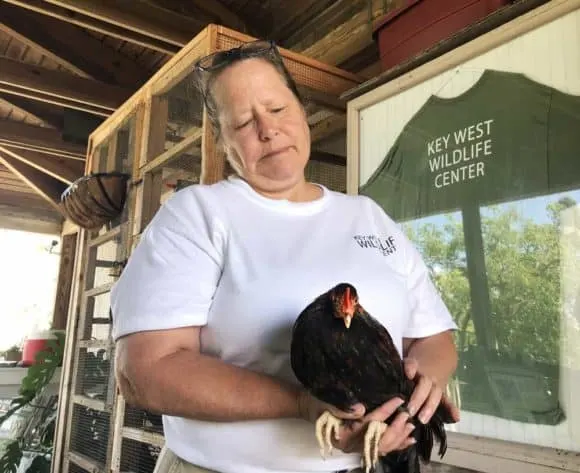
It’s free and you’re likely to see hawks, pelicans, osprey, heron and egrets in and around the cages. (Some of the former patients like to hang around.)
In spring, the center cares for dozens of baby white-crowned pigeons. This threatened species found only in South Florida and the Caribbean is flourishing in Key West, Coontz said, even nesting in downtown trees and a Mallory Square parking lot. Unfortunately, when sitting on nests, the mother and father travel many miles for the fruit needed to feed their young and many are killed in the process, leaving orphaned baby pigeons.
Two great free stops near Key West Wildlife Center
While you’re at the wildlife center, stop by two other free attractions in Key West, which are across the street from it on the Atlantic Ocean.(Both are included in our guide to free things to do in Key West.)
- The botanic gardens created by the Key West Garden Club in the picturesque remains of a Civil War fort, the Martello Tower. Folks on TripAdvisor ranks it highly. It’s a serene, tropical spot with a spectacular view of the Atlantic.
- The White Street Pier at Rest Beach is a long and wide fishing pier, perfect for a stroll and a good place to peer into the clear turquoise water.
Key West Wildlife Center
1801 White Street
Key West
305-292-1008
Key West Garden Club at West Martello Tower
1100 Atlantic Boulevard
Key West, FL 33040
(305) 294-3210
Facebook page for Key West chickens: I love all the stories you see here about chicken rescue. So many chickens in distress! It also includes photos of chickens (dare I say happy chickens?) on an organic farm in Okeechobee, Florida.
Resources for planning a Florida Keys vacation:
- Mile marker guide with dozens of stops to help make the most of your drive south.
- Florida Keys wildlife: Places to see animals
- Tiki bars: Soak up the Keys atmosphere
- 12 great kayak outings in the Keys
- Top 10 pit stops on Overseas Highway
- Free beaches in the Florida Keys
More things to do in the Key West and Lower Keys
- Free things to do in Key West
- Key West on budget: Accommodations, restaurants
- Florida Rambler guide to the Lower Keys
- Eight Key West restaurants for authentic local flavor
- Bahia Honda State Park: Good beaches & a great bridge
- No Name Pub worth finding on Big Pine Key
- Key West Butterfly Conservatory: A tranquil stop
- Audubon House, a lovely refuge in Key West
- Historic Key West Seaport
- Historic Key West Cemetery is full of stories
- Fort Zachary Taylor
- Hogfish Grill: Where Key West locals go for fresh fish
- Key West Tropical Forest and Botanic Garden: It will charm plant lovers
Florida Keys camping

The author, Bonnie Gross, travels with her husband David Blasco, discovering off-the-beaten path places to hike, kayak, bike, swim and explore. Florida Rambler was founded in 2010 by Bonnie and fellow journalist Bob Rountree, two long-time Florida residents who have spent decades exploring the Florida outdoors. Their articles have been published in the Sun Sentinel, the Miami Herald, the Orlando Sentinel, The Guardian and Visit Florida.

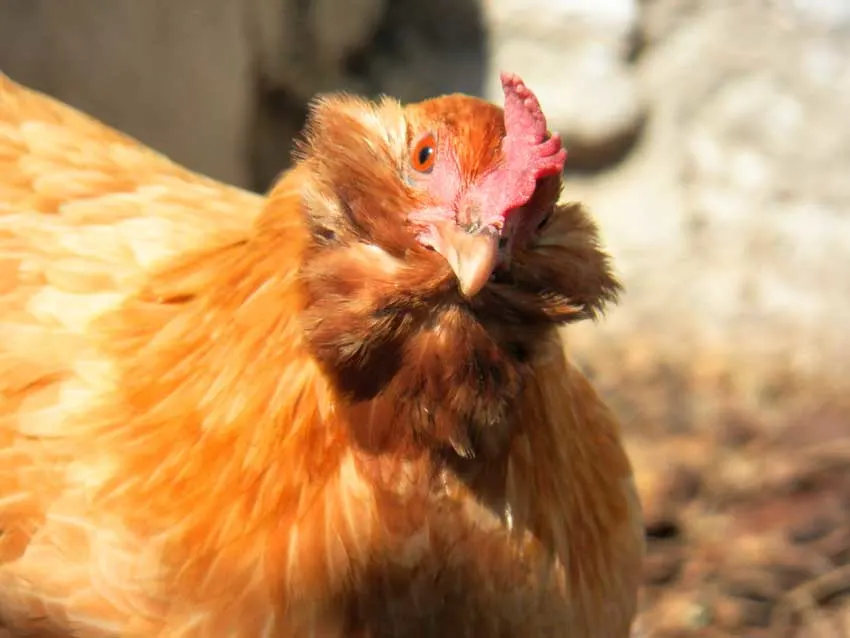
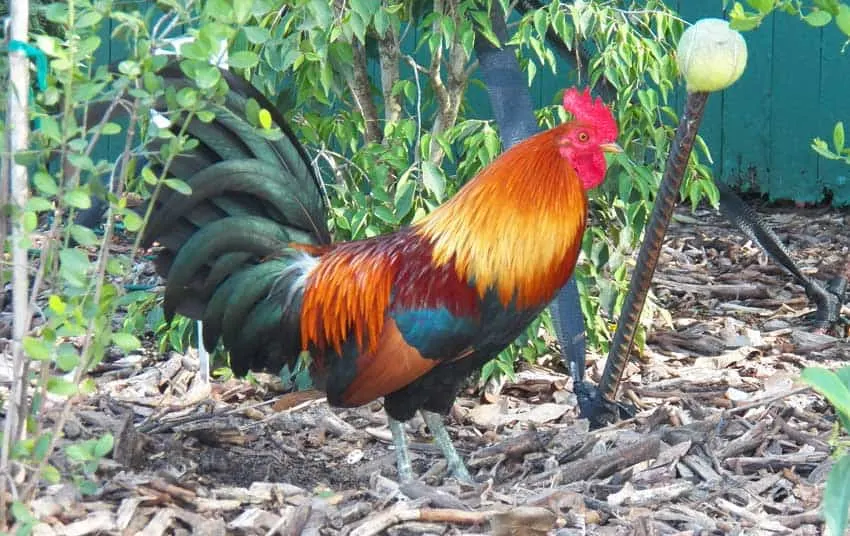
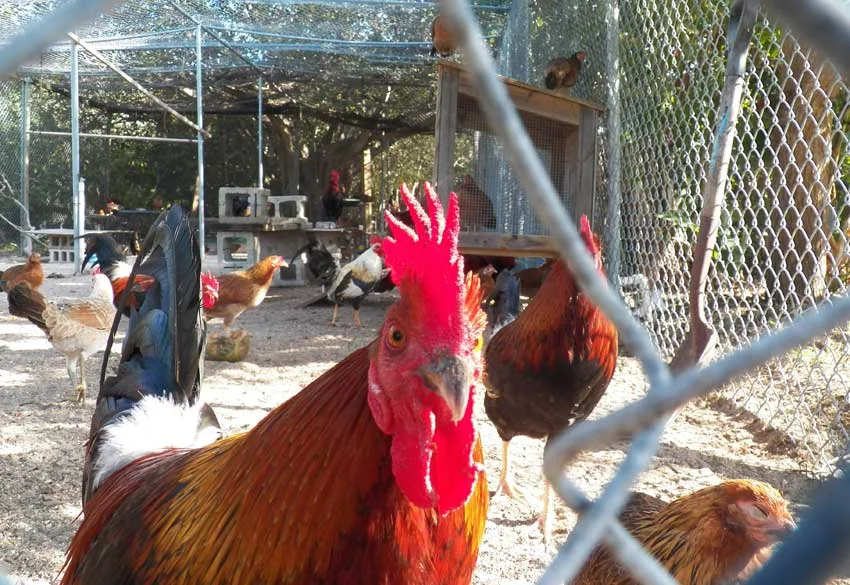
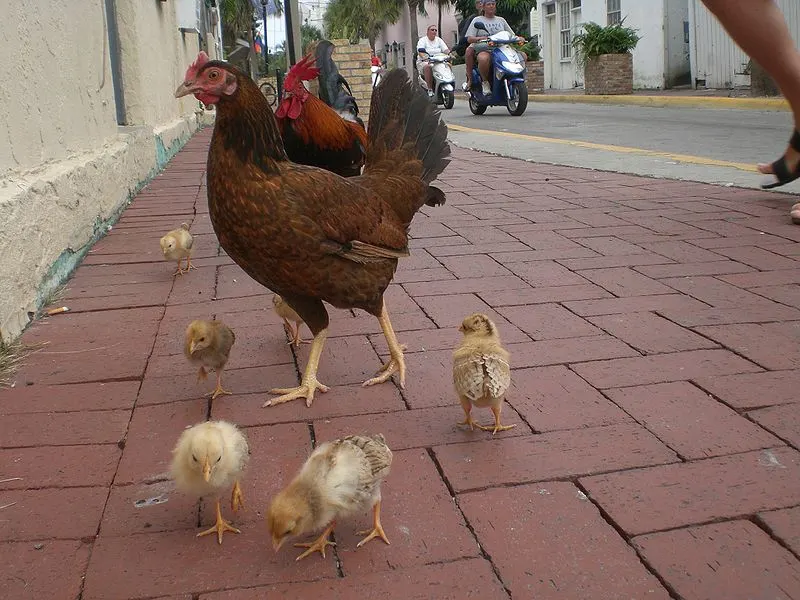
Laurie Miller
Wednesday 30th of August 2017
Really bad that they are everywhere even inside restaurants I Went there to work for a month and I could not even order food in a drive through restaurant even in my bend new expensive hotel they were 13 roosters waiting outside my room ! They even flight nextvto my balcony ! I am terrify of roosters and I got help from the hotel personnel every morning just to get to my car and go to work at a Doctors office all the training that I did in 1 month was a nightmare! I will never go back there ! It is such a beautiful place but no way ! I wanted to enjoy the restaurants but I could not even go !